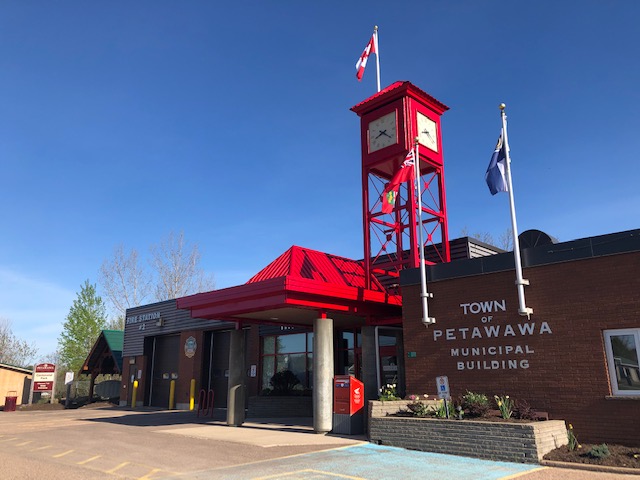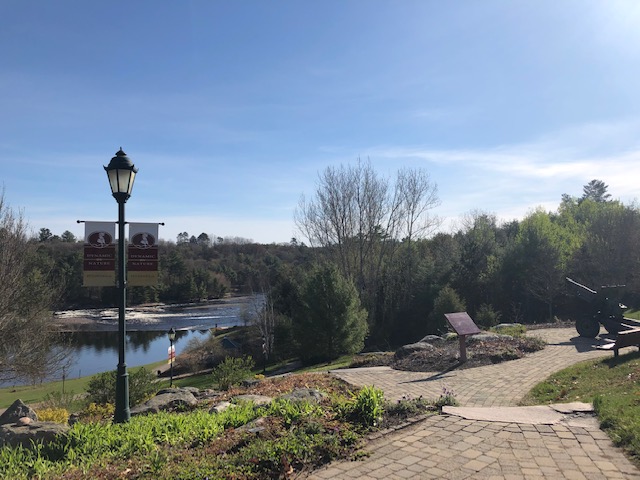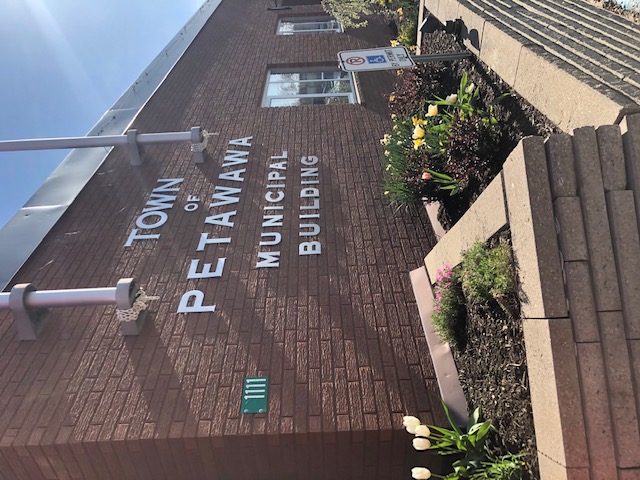General
In Ontario, sewage systems are approved either under the Ontario Water Resources Act (OWRA) or under the Environmental Protection Act (EPA). In general, a sewage system which discharges treated effluent to a surface water requires approval under Section 53 of the OWRA (formerly Section 24).
The Ministry of the Environment's (MOE's) legislative authority to manage the quality of Ontario's water resources is provided under the Act and includes specifying sewage treatment works effluent requirements which are typically presented in the form of a Certificate of Approval (a legal instrument).
The purpose of issuing a Certificate of Approval (C of A) for sewage treatment system is to ensure adequate protection of Ontario's surface waters. Effluent limits are incorporated into the Certificate of Approval to ensure minimal impact to the receiving stream.
Effluent Quality
The Petawawa WPCP is operated under C of A #1276-5YFSZH, issued on June 24, 2006. Conditions placed in this C of A address a number of issues associated with the operation and maintenance of the Petawawa WPCP and also specify effluent "requirements" and "objectives" along with sampling requirements. Table 1 presents a summary of the effluent requirements and objectives specified in the C of A.
Table 1: Certificate of Approval Effluent Requirements/Objectives
| Parameter | Effluent Requirements | Effluent Objectives | ||
| Concentration (mg/L) |
Total Loading (kg/day) |
Con-centration (mg/L0 |
Total Loading (kg/d) |
|
| CBOD5 | 25.0 | 218 | 15.0 | 131 |
| Suspended Solids | 25.0 | 218 | 15.0 | 131 |
| Total Ammonia | 5.0 | 43.5 | <5.0 | <43.5 |
| Total Phosphorous | 1.0 | 8.7 | 1 | 8.7 |
| pH | 6.0-9.5 units | - | - | - |
| Escherichia Coli (E.Coli) |
200 organisms/100mL | |||
The effluent "requirements" represent the concentrations which indicate noncompliance. The effluent "objectives"are intended as target concentrations which should be set as goals to be achieved under most operating conditions.
Noncompliance with the C of A occurs if:
- the annual average BOD5 or SS concentrations (i.e. 12 consecutive months of all samples take) exceeds the effluent "requirement".
- the daily concentration of total ammonia (i.e. Ammonia-Nitrogen + Ammonium-Nitrogen) for any composite sample taken exceeds the effluent "requirement".
- the monthly average Total Phosphorous concentration of all samples taken during a calendar month exceeds the effluent "requirement".
- any annual average BOD5, SS or Total P loading (i.e.12 consecutive months of all samples taken) exceeds the effluent "requirement".
- any daily concentration of Total Ammonia multiplied by the average daily flow over the seasonal period the sample was taken exceeds the effluent "requirement".
- the pH is outside the 6.0 to 9.5 range.
Also set out in the C of A are the minimum requirements for determining effluent quality. These sampling requirements are presented in the next table.
| Parameter |
Location |
Type of Sample | Min. Frequency |
| CBOD5 | Raw/Final | Composite | Monthly |
| SS | Raw/Final | Composite | Monthly |
| Free Ammonia Nitrogen | Raw | Grab | Monthly |
| Total Kjeldahl Nitrogen (TKN) | Raw | Composite | Monthly |
| Total Ammonia | Final | Composite | 3 times/week |
| Total P | Raw/Final | Composite | 3 times/week |
| pH | Final | Grab | 3 times/week |
| Alkalinity | Final | Composite | 3 times/week |
| Temp. | Final | Grab | 3 times/week |






